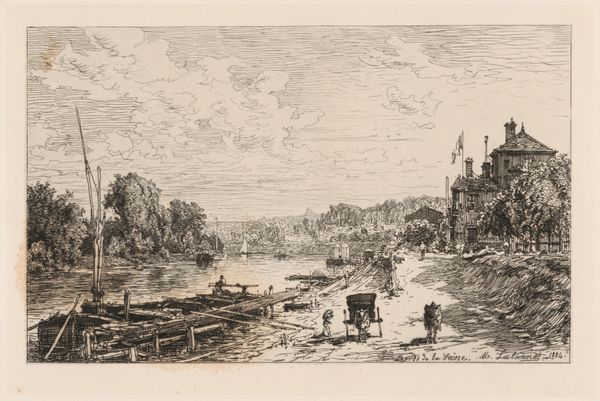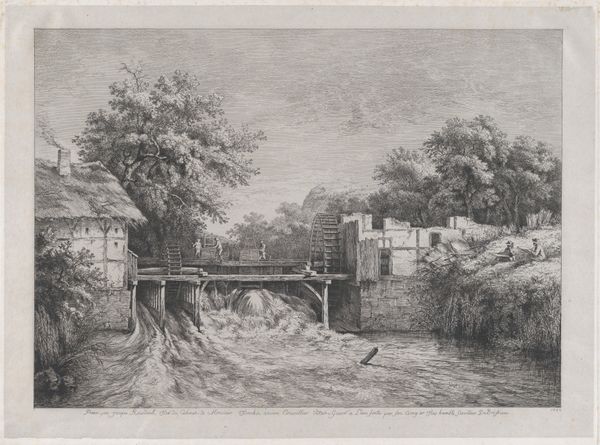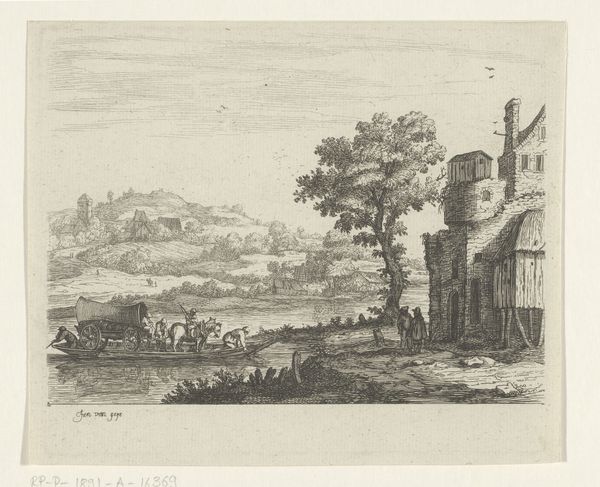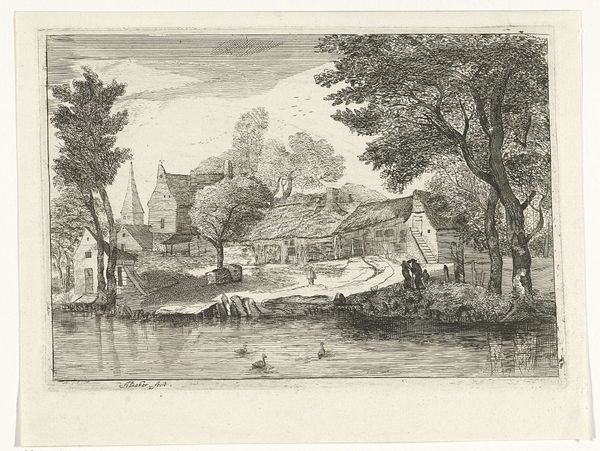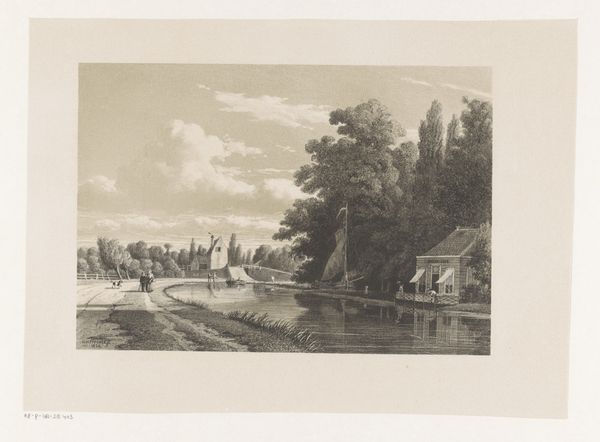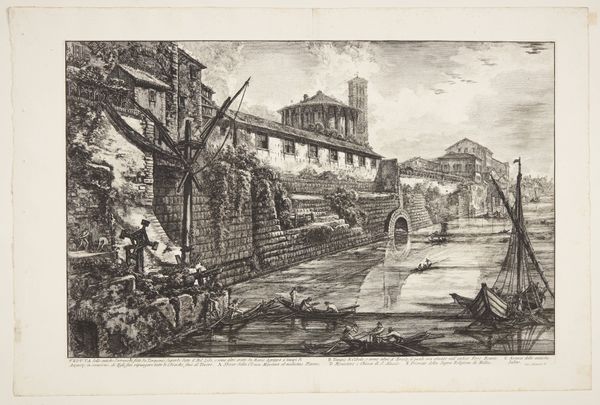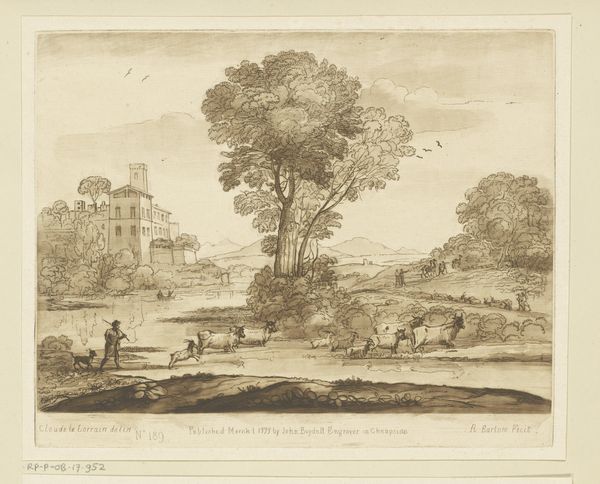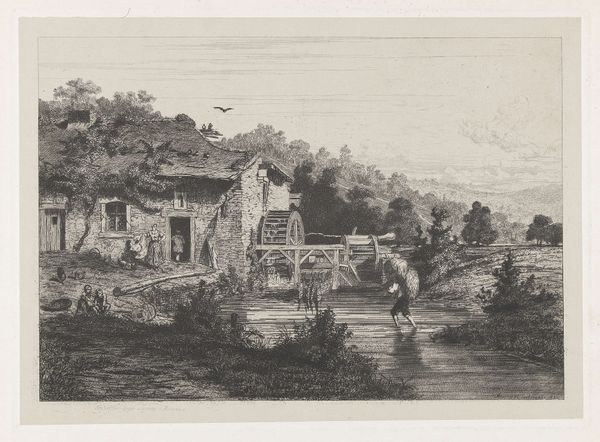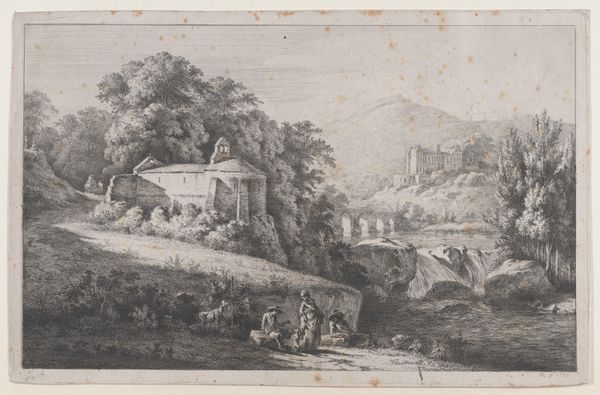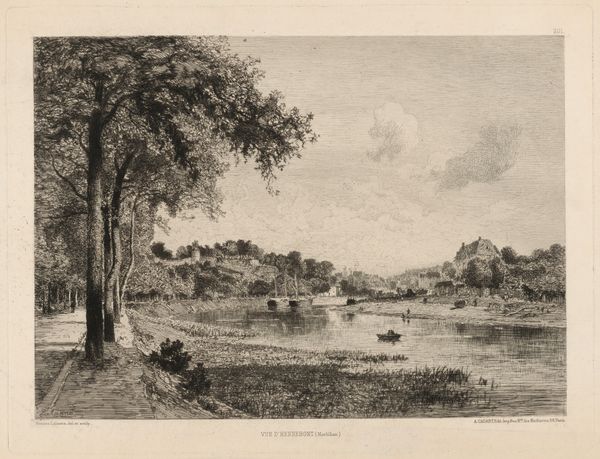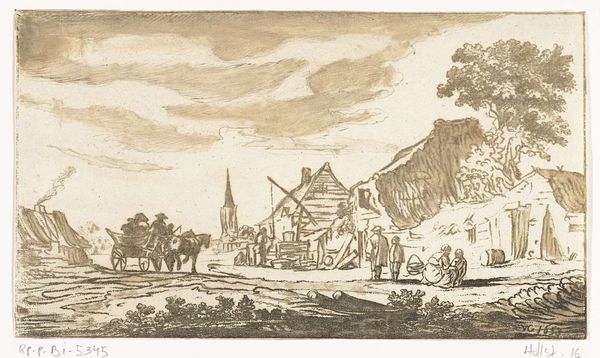
View of the Château de Sainte-Colombe in Dauphiné 1800
0:00
0:00
drawing, print, engraving
#
drawing
# print
#
pencil sketch
#
landscape
#
romanticism
#
history-painting
#
engraving
Dimensions: Sheet: 9 5/8 × 12 15/16 in. (24.5 × 32.8 cm)
Copyright: Public Domain
Curator: This engraving from around 1800 presents Jean Jacques de Boissieu's "View of the Château de Sainte-Colombe in Dauphiné," currently housed at the Metropolitan Museum of Art. Editor: Immediately, I’m drawn to the tranquility; it feels like a fleeting moment captured in time, a study of social interactions by the water’s edge and architecture set against nature's backdrop. Curator: Indeed. De Boissieu situates this chateau firmly within the Romantic landscape tradition. The crumbling architecture and towering mountains are designed to evoke strong feelings. We see echoes of the past within an idyllic vista. The print itself acted as a vehicle for transmitting a set of cultural values. Editor: I see that, though for me, the Romantic elements highlight issues of social and cultural capital. Who gets to experience this supposed 'tranquility'? Those figures lounging by the riverbank seem distinct from the working people on boats nearby. It makes me think about privilege and exclusion and its effect on the romantic narrative of landscapes. Curator: Certainly, looking closely reveals a multifaceted reality, as the landscape provides a space to work as well as one to relax in. The placement of Sainte-Colombe could perhaps imply the ravages of time that mark its physical structure and even society's hierarchies and the loss of power it represents, while for the people around it, it's the only reality they have ever known, something of beauty, and a space for leisure. Editor: I think those elements intertwine to remind us that even in ostensibly serene scenes, power dynamics are at play, and accessibility remains unevenly distributed based on your class position in life. It causes a friction within me as the idyllic scene presented to me hides deeper questions concerning exploitation and labor in these settings, almost as a ghost hiding inside of it. Curator: Considering art's capacity to reflect the complex narratives inherent in societies of its day allows for more thoughtful perspectives on landscapes we sometimes see as "universal". Editor: Absolutely. Viewing art through different lenses encourages dialogue about representation and lived realities during a historical context. Curator: It’s important that these images prompt conversations about how we perceive art. Editor: Precisely, challenging conventional aesthetics encourages inclusivity.
Comments
No comments
Be the first to comment and join the conversation on the ultimate creative platform.
